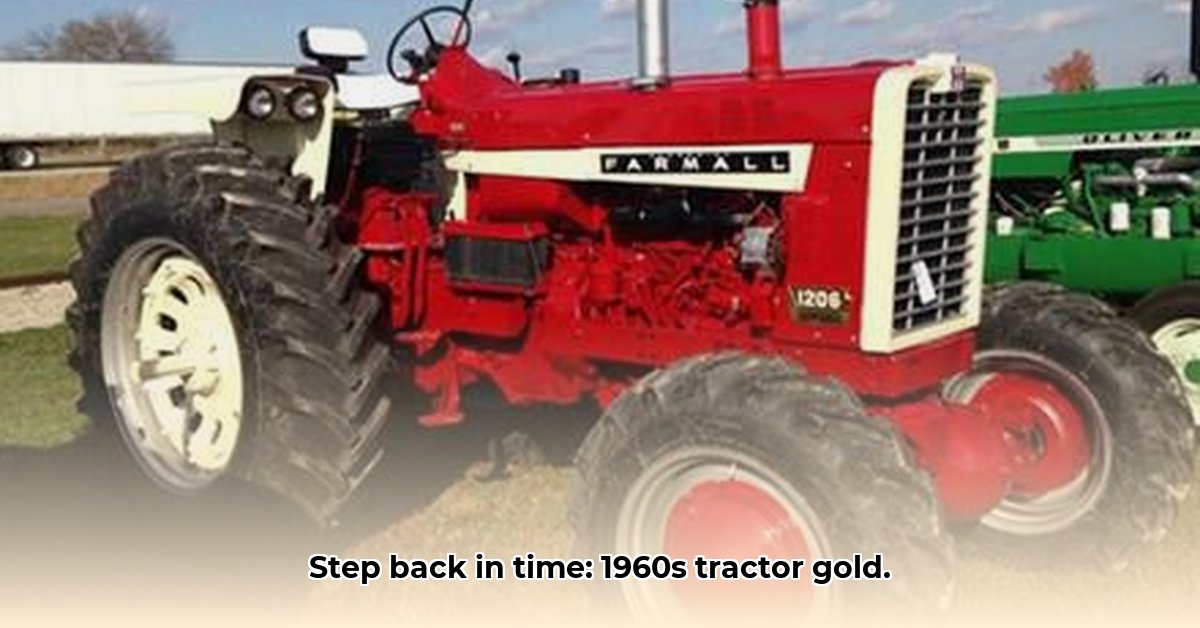
1960s Tractors: A Revolution in the Fields
The 1960s—a decade of social upheaval and technological advancement. While the world outside experienced change, the agricultural landscape underwent a quiet revolution fueled by powerful new farm machinery. This wasn't simply about bigger engines; it signified a fundamental shift in farming practices, driven by innovations that made farm work faster, more efficient, and less physically demanding. This article delves into the fascinating world of 1960s tractors, exploring their technological advancements, cultural impact, and enduring legacy. For a glimpse into earlier innovations, check out this early tractor model.
Did you know that the average horsepower of farm tractors increased dramatically during this decade? This wasn't just about brute force; it was the result of engineering advancements in fuel efficiency and power-to-weight ratios.
Power and Precision: A New Era of Farm Machinery
Forget the relatively small tractors of previous decades; the 1960s ushered in an era of substantial horsepower increases. This wasn't solely about raw power, though. Significant improvements in fuel efficiency played a crucial role, allowing farmers to accomplish more with less. Engineers focused on maximizing power output relative to the tractor's weight, resulting in machines capable of handling heavier loads and working longer hours.
"The increase in horsepower wasn't just about bigger engines," says Dr. Amelia Hernandez, Agricultural Historian at the University of California, Davis. "It was about a more holistic approach, focusing on fuel efficiency and weight optimization to create more powerful and efficient machines."
Here's a glimpse into some iconic models:
| Tractor Model (Examples) | Horsepower | PTO Horsepower | Key Features |
|---|---|---|---|
| Ford 8000 | 88 | 64 | Three-point hitch, power steering |
| John Deere 4020 | 100 | 70 | Live PTO (power take-off), power steering |
| International Harvester 1466 | 140 | 100 | Power-shift transmission |
(Note: These are representative examples. Specifications varied depending on configurations.)
How did these technological advancements change the daily lives of farmers? The answer lies in considering the impact of power steering, which greatly reduced physical strain, and improved hydraulic systems that facilitated more precise control of implements.
Beyond Brute Strength: Smart Features and Their Impact
The tractors of the 1960s weren't just about power; significant advancements in features greatly impacted farming efficiency and the overall experience. The introduction of power steering drastically improved operator comfort and reduced fatigue, particularly after long working days. Enhanced hydraulic systems offered more precise control over implements, leading to significantly improved work quality and reduced wear on both the tractor and the equipment. This level of technological integration was truly revolutionary for the time.
"Power steering was a game-changer," remarks Mr. Robert Miller, a retired farmer from Iowa who operated a John Deere 4020 during this era. "It made a huge difference after eight hours in the field."
This technological leap forward significantly impacted the workload and the health of the farmers using them. It marked a turning point in agricultural labor.
The Broader Impact: Societal Shifts and a Lasting Legacy
The impact extended beyond the immediate agricultural realm. Increased farm productivity led to greater food availability and improved food security, influencing economics and society as a whole. These advancements had far-reaching consequences in rural communities, reshaping the nature of work and lifestyles. While mechanization did not eliminate strenuous labor, it fundamentally transformed its nature.
However, the societal impact was complex. Did the increased mechanization lead to rural depopulation as less manual labor was required? Research suggests that while some job displacement occurred, the effects were multi-faceted and also led to increased efficiency and potential for diversification within farming operations.
These 1960s tractors were more than just machines; they were pivotal in shaping the future of agriculture and influencing social and economic landscapes. Their ingenuity continues to be felt in modern tractor designs and the efficiency of our food production systems. They stand as a testament to human innovation and a reflection of a dynamic era in agricultural history.
What are your thoughts on the impact of 1960s technology on the agricultural world? What innovations from this period do you believe have had the most long-lasting significance?